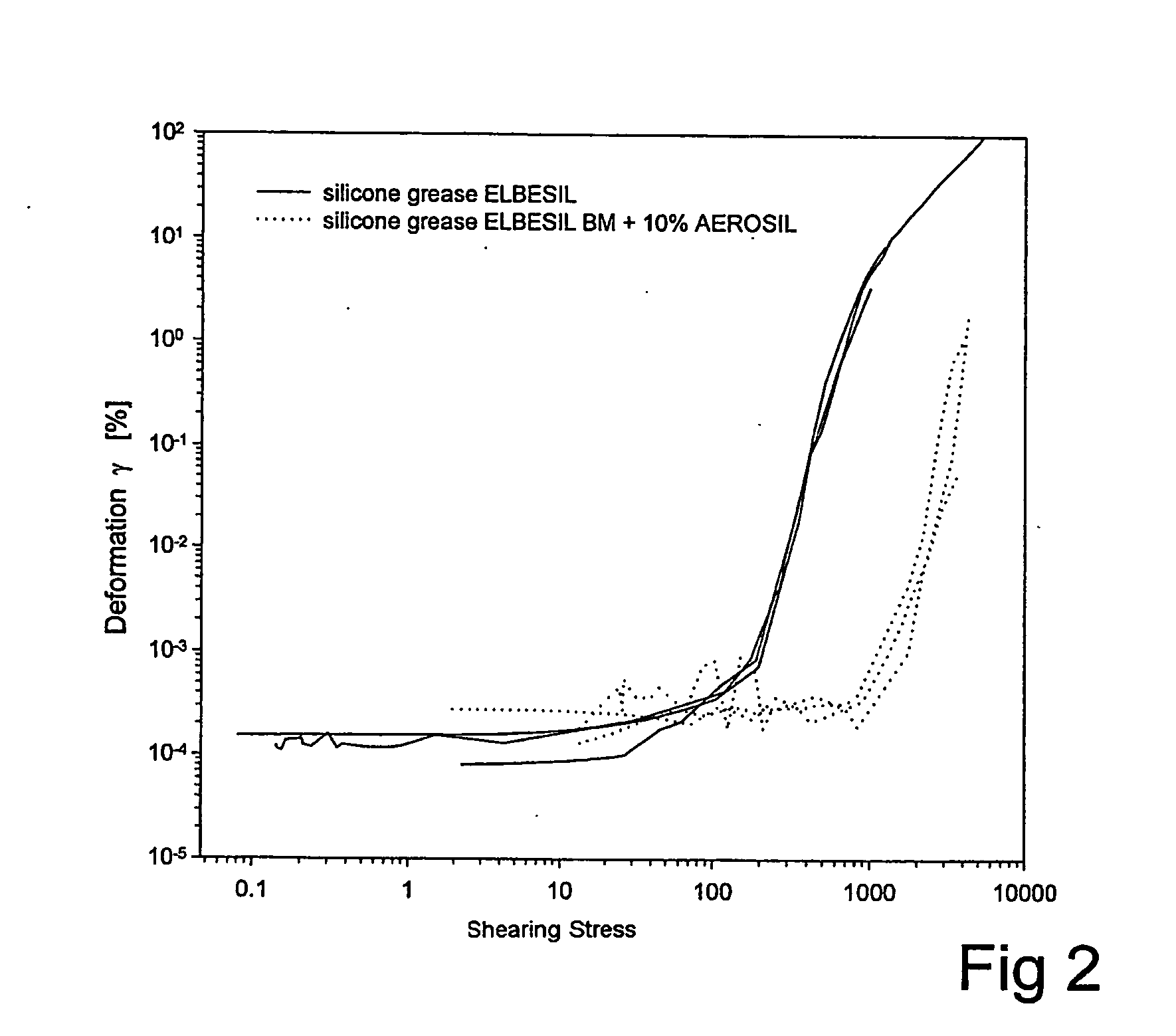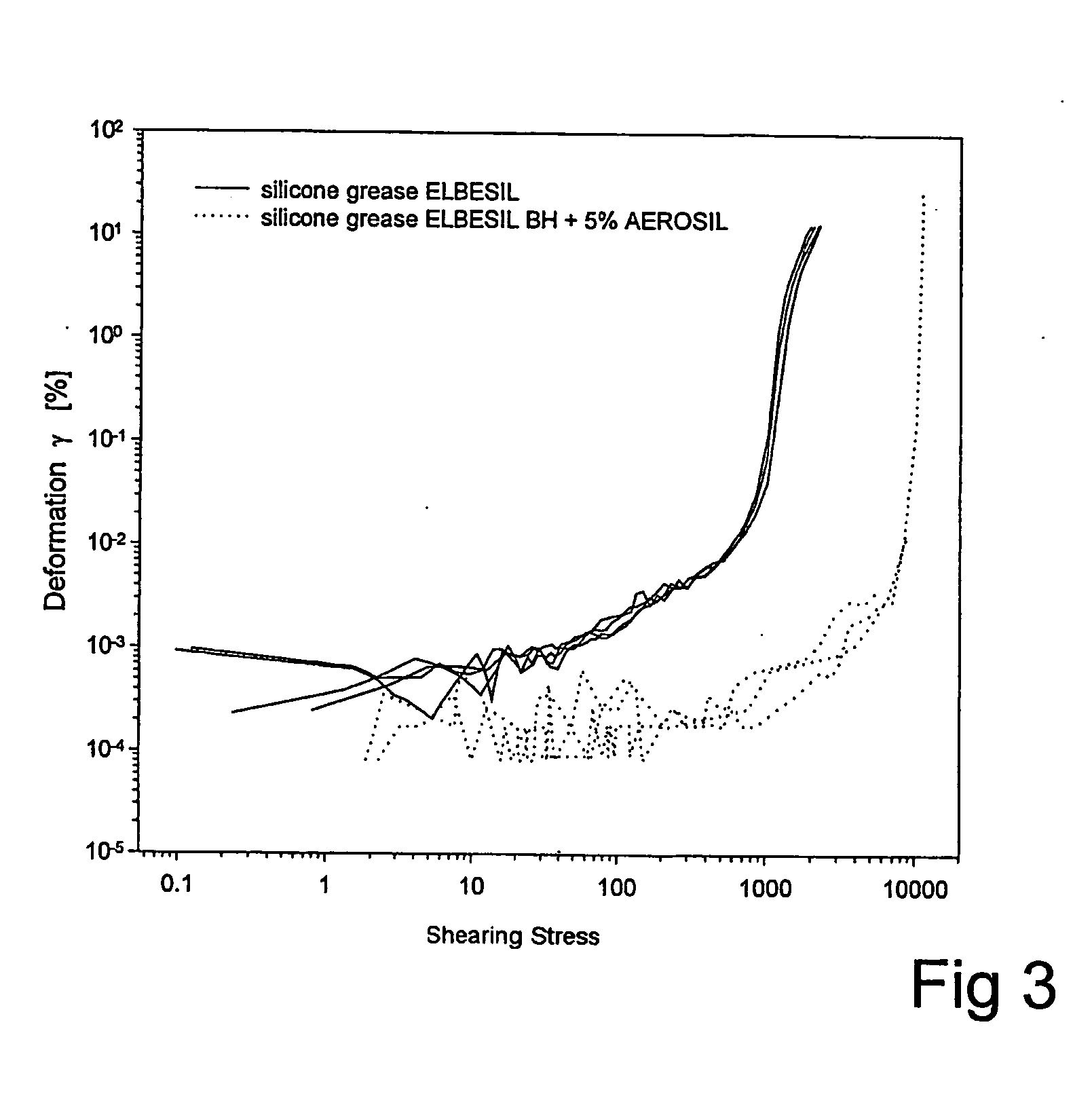[0009] The object of the invention is thus to improve a visco-elastic polymeric coating paste of the kind referred to such that it provides optimum anti-fouling properties as an attachment substrate for the temporary self-cleaning protection against natural
macro-fouling on a water-wetted component. The anti-fouling properties are to be variable and greatly flexible in their application under given ambient conditions of the component to be protected. Moreover, the coating paste in accordance with the invention, to be simple and cost-efficient, is to be compounded of commercially available materials. Analogously, its manipulation is to provide for a method which allows application by simple and repeatable means. Furthermore, the coating paste in accordance with the invention is to be such that any fouling may be removed, without use of environmentally toxic substances, during operation of such means. SUMMARY OF THE INVENTION
[0014] During its application the coating paste in accordance with the invention forms a
smooth surface and is self-
smoothing at shearing stresses above its flow point. Thus, its good self-cleaning properties notwithstanding, friction relative to the structure to be protected is reduced when no fouling is present on it and if it is moved. If the structure is fouled, the coating paste constitutes a loss layer. The durability of the attachment substrate formed by the coating paste may, if required, be individually set for days or months and depends upon the mechanical stress of the substrate. For geophysical applications, the durability may be set, for instance, for two months. Thus, the present invention make possible a coating, for instance, which protects
salt water wetted surfaces from natural fouling. In this manner, the permanent attachment of such organisms as barnacles on
hydrophone cables, oil platform supports and the hulls of ships may be prevented effectively and efficiently. For the first time, it has become possible to protect slow ships and slowly moving components (e.g. measuring cables) from detrimental fouling by the low firmness coating paste in accordance with the invention.
[0016] The flow point of the coating paste in accordance with the invention is characterized by being adjustable on the basis of hydrodynamic and biological environmental conditions of the component, which flow point is between 5 Pa up to 2,000 Pa above the wall shearing stress of the unfouled component to be protected. A setting slightly above the unstressed wall shearing stress ensures that while in its unfouled state providing a
solid surface, the coating paste, by
fluidization, nevertheless prevents an attachment of marine organisms of macroscopic size. High seas tests have shown the
prevalence of such macro-organisms which in accordance with a further embodiment of the invention require a setting of the flow point which is 5 Pa to 200 Pa above the wall shearing stress of the unfouled component to be protected. The coating paste aims at shearing off any attaching fouling organisms. The coating is thus to act in the manner of a loss layer. However, in order to prevent loss of the coating under current conditions of higher wall shearing stresses, e.g. from large
underwater structures which are subject to larger fluctuations, or at rough seas in general, coating pastes of higher flow points up to 2,000 Pa may also be applied. An attachment of fouling organisms under more difficult ambient conditions of this kind may thus be prevented by the coating paste in accordance with the invention. Moreover, the composition of the coating paste in accordance with the invention may advantageously be characterized by
silicone,
fluorocarbon or
hydrocarbon as its main ingredient. Either substance is non-toxic and has properties suited to its application. While polymeric pastes including fluorocarbons are not, however, readily commercially available,
silicone pastes may be obtained readily and at low cost. They are chemically
inert. They are not absorbed and do not detrimentally interact with vital biological processes. In particular, silicones are not subject to rapid degradation by fungi and, therefore, provide extended protective action. They require added anti-bacterially effective
zinc oxide, and the environment is protected. The individual setting of the flow point is selected on the basis of the composition of the paste (liquid oil or
solid paste) and by homogeneous mixing with shear thickening and
shear thinning additives.
Silicone oil in particular constitutes an advantageous
liquid composition base. By adding shear thickening or
shear thinning additives such oil may be changed to a pasty state. The use of pure
silicone oil leads to relatively high material losses so that the duration of protection is reduced. However, silicone oils may be changed to coating pastes of suitable flow points by the addition of shear thickening particles and pastes. Moreover, hydrocarbons may be used as the main component.
Petroleum jelly which forms the base of
Vaseline is particularly suitable. Hydrocarbons are nontoxic and can be removed more easily than silicones.
[0018] In accordance with a further embodiment of the invention, shape-imparting particles may be added to the inventive coating paste. Such addition would result in a
topography which is both macroscopically and microscopically variable (
adaptation, the case of a soft consistency, to the contour of the substrate). The surface of the paste may be roughened by the addition of shape-imparting particles. The addition of fillers aims at reducing the contact surfaces between the bio-foulers and the surface to be protected. Preferably, the fillers are homogeneously distributed in the paste by mechanical mixing. It is known that low degrees of roughness in the nano-range are particularly suited for preventing
algae and
bacteria from
settling on nautical products. Such hydrodynamic surfaces may be produced by adding structure-imparting nano and
micro particles to conventional binders (see DE 101 17 945 A1). The silicone based coating paste described in the context of the invention is suitable for such a mixture, since only a single additional homogenizing step is required for the mixing. Overall, under stress the coating paste is of
irregular shape,
water repellent and soft. Such properties of the paste are, therefore, the opposite of those of attachment substrates preferred by many marine organisms, in particular barnacles. Thus, the coating paste in accordance with the invention achieves an optimum efficiency as regards the prevention of bio-fouling of
underwater surfaces. For generating a hydrodynamic surface it is advantageous, in accordance with a further embodiment of the invention, to select a coating thickness which takes into consideration the height of the
surface roughness and the mechanical stress of the component to be coated, the
life expectancy of the coating and / or fouling pressure. Hence, the self-
smoothing coating may be used to compensate for
surface roughness. Since under stress the coating is one which will be used up, the
life expectancy of the coating may be selected by its thickness. Preferably, the coating thickness may be from about 0.02 mm and 5 mm. The coating is effective on
solid and flexible substrates and operates in a temperature range between −20° C. and 400° C.
 Login to View More
Login to View More 


